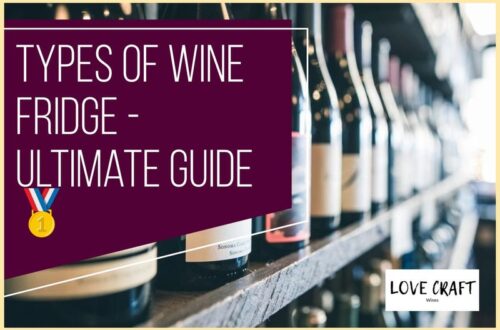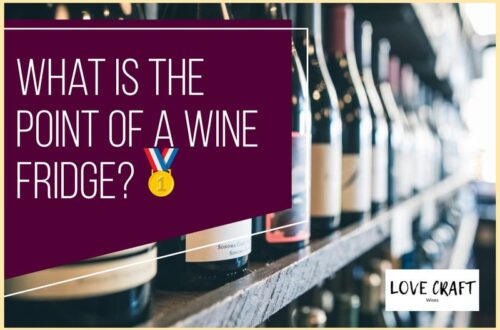In this article, we’re going to be discussing which is best to buy, and why?
There are many manufacturers/brands, and each have multiple models on the market. So how do you choose which brand and model is most ideal for your needs?
Well, there are really 6 key questions that can help determine this, and we’ll talk about this in the section below.
Table of Contents
What to Buy – Considerations
These are the most important considerations that you should keep in mind when deciding on the type of which is suitable for your needs:
What is your budget?
When it comes to choosing any kind of product, it’s important to determine the monetary budget which you have to spend. This way, you’ll narrow down your focus of the products within that budget, immediately from the outset.
This will also mean that you’re not going to make any decisions that you may regret, and purchase a that is vastly too expensive.
If you’re choosing a for your business, such as a restaurant or bar, or you’re a collector or connoisseur, then we’d highly recommend approaching this purchase as an investment, because this unit will ultimately house your collection, so that your wines remain fresh.
Where do you plan to position your ?
The positioning of your will ultimately determine the type that you choose. For example, if you’re looking to position it on a kitchen worktop, the most suitable one would be a countertop .
However, if you’re looking to position the under your kitchen/bar worktop, then a built in is ideal. This is because they have front-facing vents, so airflow isn’t restricted.
For those who want to position the unit in more of an open environment, a is fine.
It should also be noted that a built-in can be used in a freestanding position, but a freestanding (without a front-facing vent) cannot be used in a built-in/undercounter position.
Additionally, for those who are considering storing a unit in their , the logistics of transporting it down there are important to consider.
How much physical space do you have for the ?
The amount of physical room that you have dedicated to positioning your will obviously be a large factor in which model you choose.
Therefore, it’s crucial that you’re aware of where exactly you’re looking to position your , and the specific measurements.
This ties in with the previous question, as to where you plan to store the appliance.
How much do you plan to store in this ?
The number of bottles that you’re looking at storing will determine the which you require, this is also referred to as the unit’s capacity.
As a rule of thumb, it’s always useful to overestimate your required , so that you have additional space, instead of not having enough space for your .
If you’re a keen collector, or have a restaurant/bar/hotel, then it’s advisable to get a large , with some of these having capacities from 100 through to 300 bottles.
However, for more casual drinkers, a small capacity is more suitable.
Are you looking to store different varieties of within this ?
Different types of , white and rose will have a varying ideal storage . This needs to be met for adequate .
Because of this, many people choose to purchase a , which has 2 separate .
These zones can have their independently adjusted, so that you can program one zone to reach the requirements for storing your , and the other zone can store your white and rose .
The use of multiple zones may also be helpful for those who want to store different types of a single variety of , for example, as referred to in our and white guides, there are multiple types of red and white wines available:
These include full-bodied, medium-bodied and light-bodied wines.
In the case of red wines, a full-bodied (Syrah, Bordeaux, Cabernet Sauvignon) should be stored at approximately 64 degrees, whilst a medium-bodied (Merlot, Chianti, Pinot Noir) should be stored at 60 degrees, and a light-bodied (Beaujolais, Port)should be stored at 57 degrees.
Then there are these wines from different regions and countries, for example, an Australian may have different storage requirements to an equivalent french or california .
It’s even the case now where manufacturers have created triple zone coolers to fulfil the growing demand for storing many different varieties in one physical unit.
Are there any specific features of aesthetic requirements that you have?
We understand that a is often the centrepiece of your kitchen or bar, so it’s important that it not only operates well, but also looks the part.
Therefore, you’ll want to consider the specific colour that you’re looking to get, including the outer chassis material. We actually like the outer, as it can look extremely eye-catching when kept clean and polished.
Although more of a functional aspect, you’ll also want to consider whether you want a , so you can decide which way it swings, as well as the glass type, for example so you wanted tinted glass which is UV resistant (highly advised). We always advise choosing a with a , as this is 4x stronger than normal (annealed) glass and thermal resistant, so any changes will not cause issues.
Conclusion
Once you’ve decided on the ideal type of wine refrigerator for you, then we recommend reading as many reviews as possible, to determine the ideal model for you.
We’ve just written a post on the best wine fridge brands that exist on the market, so take a read of that to get some inspiration.
Otherwise, view our range of buyers guides below:






